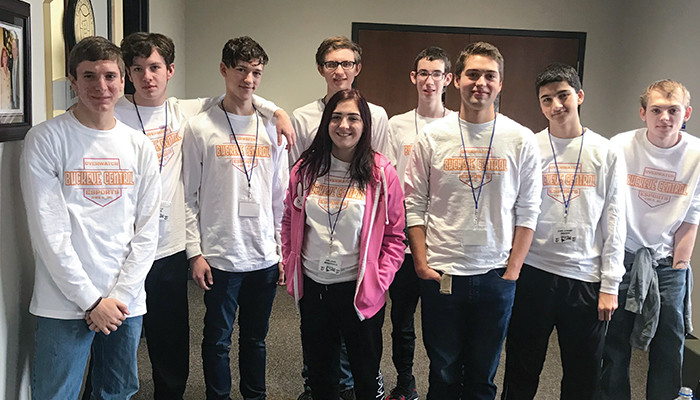In 2019, the Buckeye Central Local School District esports team went undefeated in the regular season for “Overwatch.” Photo by Christine Close.
The program is still small, with about a dozen students competing. But already, those students are experiencing remarkable success — both in the competitive arena and in building academic and interpersonal skills that district educators had hoped the program would foster. Last fall, the team went undefeated in the regular season for “Overwatch,” earning a spot in the state championships, where Buckeye Central students finished as runners-up. The state tournament run was met with the type of fanfare usually reserved for traditional athletes.
“When they went to state, their lockers got decorated, we put it on social media, we made a big deal about it,” Studer says. “A girl on the team designed an esports logo, and we printed out T-shirts.”
Educators also noticed behavioral differences in the students. At the beginning of the season, one student didn’t take practices and games seriously, but he became a dedicated team member once he realized that his peers were counting on him. Another who helped set up the computers over the summer went from “barely talking” to confidently joking around with adults.
“Some of these kids never would have been involved in any type of sport before,” Studer says. “This gives them a chance to compete and be a part of a team.”
MORE ON EDTECH: Discover why video games and education don't have to exist in silos.
Creating Programs Where All Students Are Welcome
Miles Carey, assistant principal at Washington-Liberty High School in Arlington, Va., built buy-in among other educators by emphasizing student engagement when he launched an esports program in 2017. Of the 50 students who showed up to an initial meeting, about one-third weren’t involved in any other sport or activity.
“When I did that same poll the next year, many of those students reported that they were now involved in something else too,” Carey says. “It did help increase their connection to the school, for sure.”
One Washington-Liberty High team recently won the state championship in “Rocket League,” a soccer game where players compete using rocket-powered cars. Because the program is officially sanctioned by the school and a state league, students on esports teams get the same supports as other athletes to help them keep up their grades.
Some benefits have been unexpected. A teacher of English language learners told Carey that esports participants are picking up English more quickly because the program gives them a chance to practice language skills outside of the classroom.
The esports program brings together different types of kids, including popular students and traditional athletes.
“It’s been a huge mix,” Carey says. “One of the students that won the Rocket League championship is going to start soccer practice next week. Others have done crew, baseball and basketball. Another is the drum major of the marching band. Esports is an open-to-anyone activity.”












